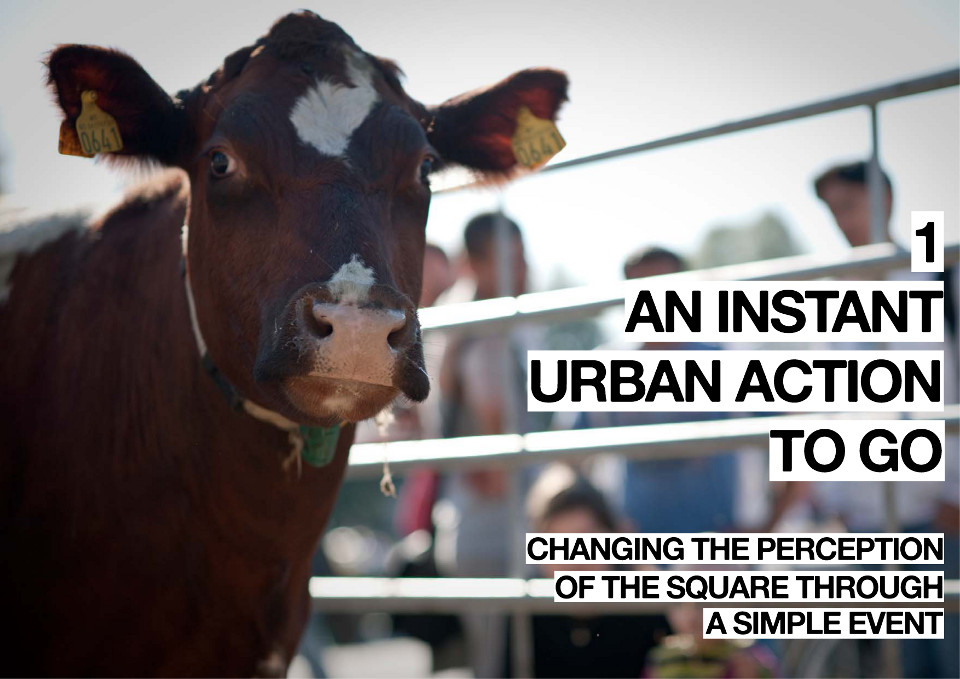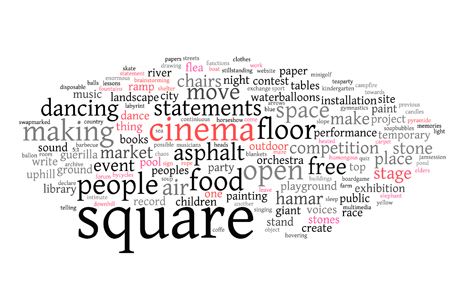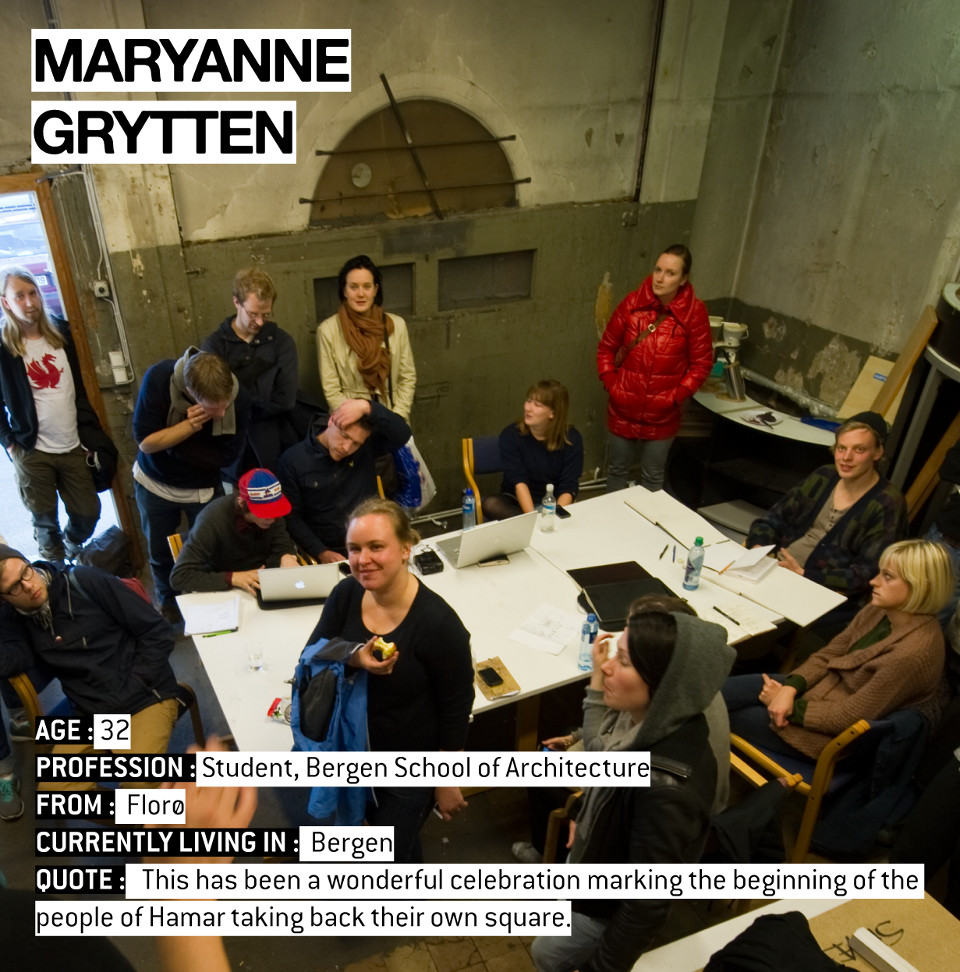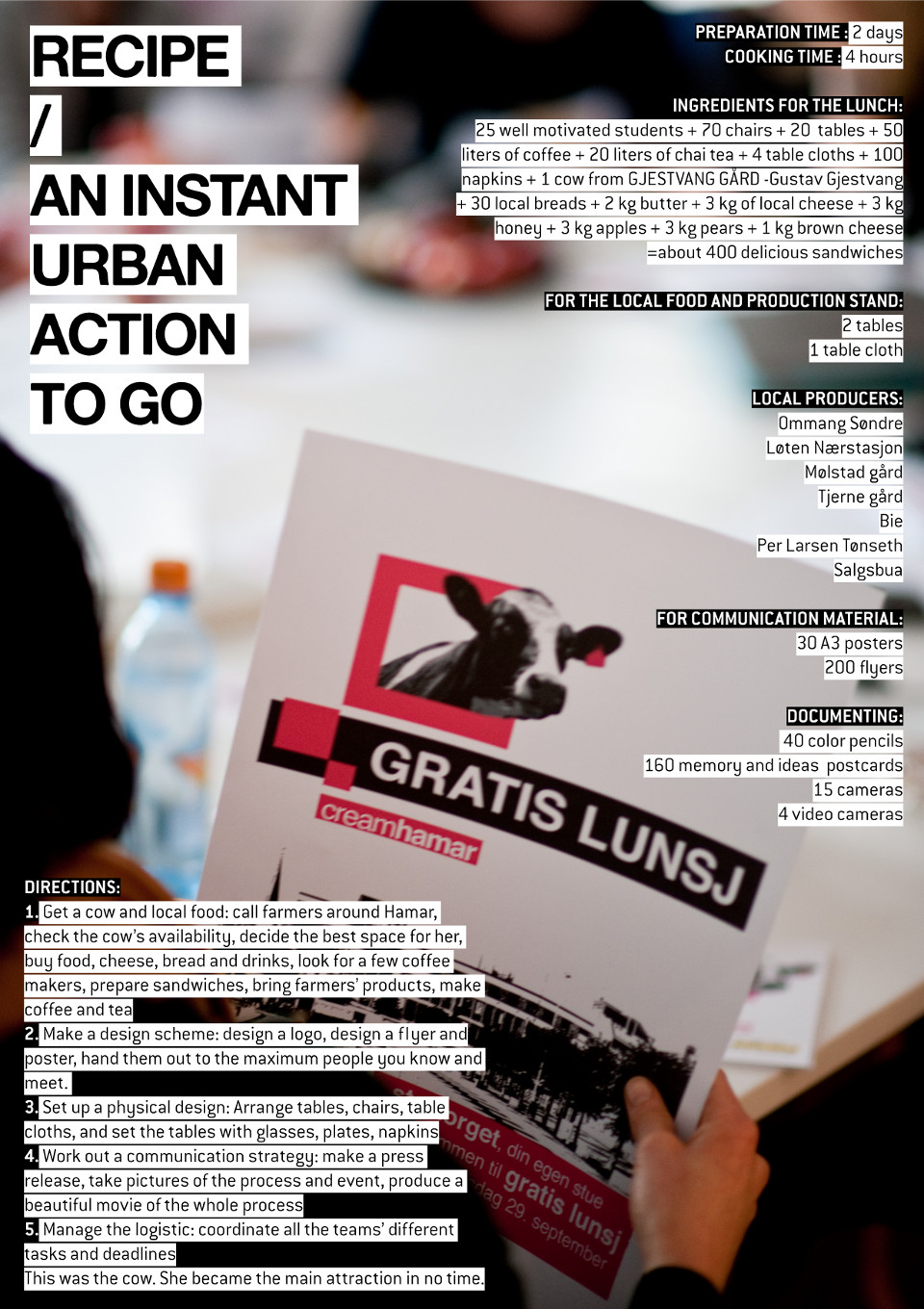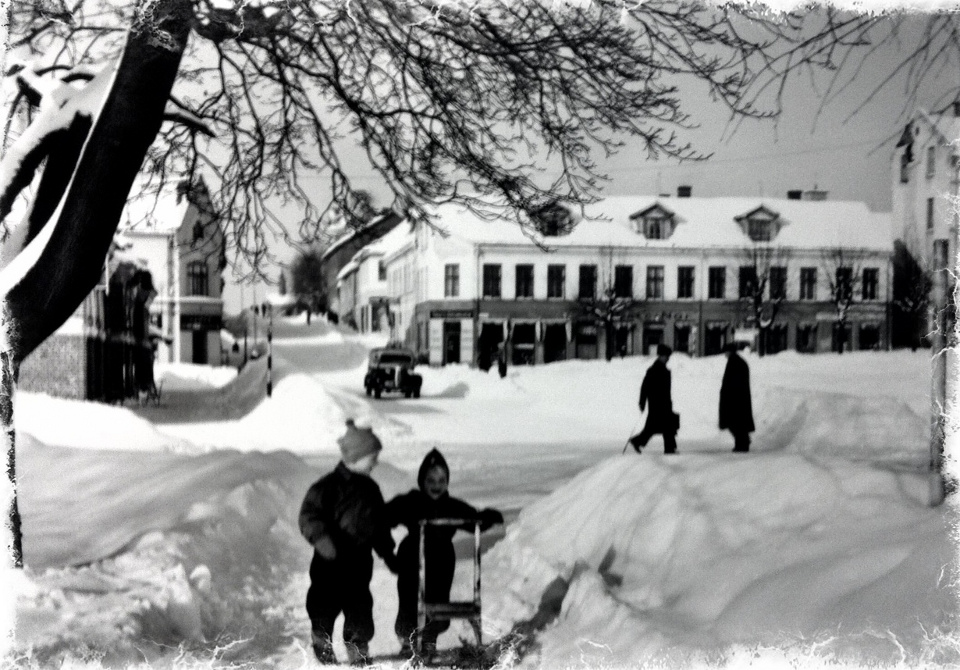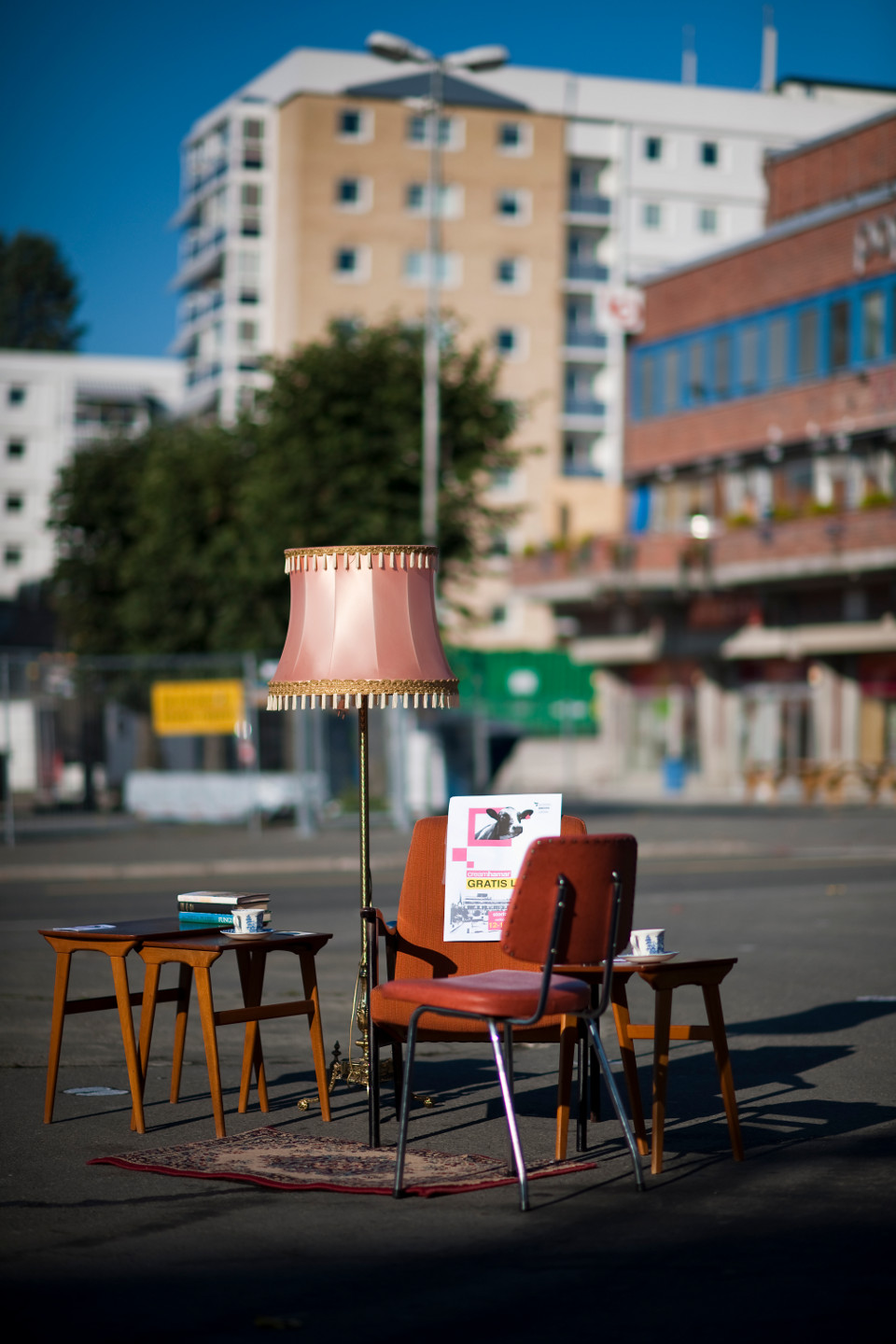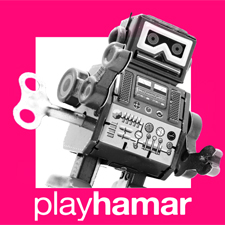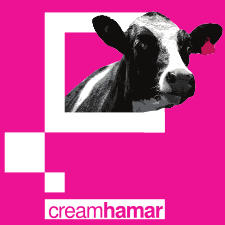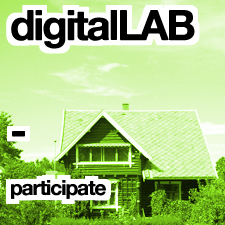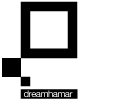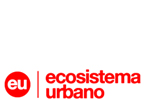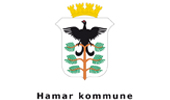Changing the perception of the square through a simple event
Nowadays, there is a worldwide movement – from Wall Street in New York to the streets of Delhi – of disenchanted and leaderless citizens who are reclaiming public space. The same generation is widely using the internet, where the possibilities for consumption and creation are endless, as the main tool for creating communities.
We are living in a world that is rapidly changing and constantly reinventing itself. The overload of information and mix of cultures and disciplines require new ways of thinking and working. As architects devoted to a 21st century society we cannot continue – as many have done in the past or are still doing today – offering a fixed product to a supposedly univocal community.
In ecosistema urbano we believe there is no such thing as a universal solution. Each project is different, and Dreamhamar required multiple solutions for multiple challenges that had only one thing in common: Stortorget. We put forward the conviction that before planning a new square we needed to build a community of people who would use the square, and who would keep it alive. A community is, after all, the foundation of a public space.
The steps for building a community are impossible to foresee. However, we still needed a plan of action for Stortorget. We developed a network design approach to implement a concept that embraced all of the possible solutions: we called it Dreamhamar.
Dreamhamar is about encouraging residents to become the creators of public space. It is about starting conversations between different stakeholders, and doing things together. It is about understanding Hamar’s current needs by initiating dialogue and brainstorming sessions about the future design of Stortorget square, by means of workshops and urban actions. By basing ourselves in Hamar for 4 months, we had the opportunity to work closely with the community and develop an understanding of its existing issues.
Instant improvements
Painthamar was the first urban action we performed in Stortorget, and the official launching event of Dreamhamar. The idea was to rapidly transform the square, which had been a parking lot for years, by painting it. Then when people would come to see Stortorget’s new colors, we could tell them all about Dreamhamar and how they could participate.
It turned out this was not an easy task. Since it was the first one, the very definition of the urban action was ambiguous. Its temporary and ephemeral nature created confusion regarding a budget-result formula, and its hybrid nature made it difficult to effectively communicate the event to the targeted community. We quickly realized that interaction with the citizens – the Hamarsingen – would be an essential condition to initiate the process. Interaction is very similar to a chemical reaction. We had A and B, but they were not reacting together. In order to make the reaction possible, we needed to find a catalyst.
On September 27th a group of 25 third-year students from the Bergen School of Architecture came to Hamar to design an instant urban intervention for Stortorget. They were part of Dreamhamar’s Academic Network.
Their stay was short but intense and full of energy. Two and half days of workshops at the Physical Lab aimed to reactivate Stortorget, and make people aware of what was going on. The goal was to collect ideas, to have fun, to use the space in a different way, and to provide the conditions for people to react, become proactive, and socialize.
During the workshop, several questions arose:
– How can we bring people to the square? How can we create an atmosphere where they want to meet each other?
– How can we make a mock-up of what the final square could become? How can we transform this former parking lot into a public space?
During a 20-minute brainstorming session, the students came up with many ideas for a new urban action in Stortorget, among them: chairs, an outdoor cinema, a stage for music, a skate ramp, a balloon landscape, a talk show, a sound installation, free painting on the road, an open call to do crazy things, an area for gymnastics, a heated pool to take a bath, a barter market such as ‘bring a shovel and take a horse’, connecting the square with the lake, a labyrinth, celebrating an outdoor mass, storytelling by people, candle light in the evening, a dark night dancing competition, a temporary public library, relocating the Bazaar building in the square, making a hole in the asphalt and filling it with candy, a poetry square, wearing rubber costumes, building a staircase to watch the lake, placing a trampoline for people to jump on, creating artificial clouds, making a barbecue, organizing a dancing competition on a slippery floor, a ski jump, a sleepover party or even making Stortorget an independent country with its own king and queen.
They were all interesting ideas from which we selected the Cow – to provide fresh milk for the coffee – and the free public lunch – to invite everyone in Hamar to join the event and to mingle. The idea was also to take advantage of this meeting to encourage people to write down and share their ideas for the future design, and personal memories around the square.
Creamhamar was created, and the second urban action of Dreamhamar was born.
‘Creaming’ Stortorget
On the D-day, the cow from Gjestvang Gård came to visit Stortorget, while students went about transforming the square. They divided into groups that were each assigned a different responsibility for Creamhamar. One group placed the tables and embellished the urban scene, another prepared the food, another made the design, and one sold the farmers’ products.
Once everything was in place, the only thing missing was the people. The long table was so nicely organized that at first, no one dared to use it. But after one group “opened the feast”, everyone came rushing in.
The results were amazing. It looked like someone was getting married in Stortorget and everybody was invited. People from all walks of life – students, retirees, families, tourists – came, ate, enjoyed, talked, shared, chatted, and relaxed under the sun. The students were running around, mingling with the people, handing out info about the workshops, taking notes on their ideas, and collecting suggestions for the square.
All sorts of conversations started naturally around the tables and people got a unique chance to meet others as never before in Stortorget. The conversations continued and gradually included all the people sitting around the table. We ended up making new friends and spreading the word about Dreamhamar.
Around the table there was a group of foreigners who were studying Norwegian at the adult learning centre just up Kirkegata street. One of them was Joanna Mikulska. She was very curious about Dreamhamar. She told us about her previous work in Warsaw, which involved people in participatory processes about the history of their city. This led to the idea of creating a workshop for Dreamhamar about storytelling. Joanna was invited to write a post about her past experiences of similar actions, and to use it to invite people to take part in the project.
Sharing experiences
The serendipitous encounter with Joanna not only gave birth to a new workshop coming from the community itself, but also pointed out a significant relationship between the urban action and the workshop. Meanwhile Joanna’s workshop -Storyhamar- sought storytellers to narrate past experiences and rediscover new ways of reading the public space. So the urban action generated an event which created new experiences for future stories.
Stories are important to relate to a place. While writing this blog we listened to Paco Gonzalez’ and Ethel Baraona’s second lecture in the Tactical Urbanism online workshop about narrative, and how it gives us access to local knowledge, and to a better understanding of the community.
Creamhamar was an action aiming to bring people together by using the flexibility and accessibility of the public space to create an open, simple event. By temporarily curating the space, the event transformed the perception of the square from a parking lot to a meeting place. In other words, Creamhamar created new experiences in people’s lives, which would become future stories to be told within the local community, regarding the square.
“Storyhamar workshop involves to me, a lot of uncertainties but also a lot of hopes. During the couple of hours with Hamar citizens, we will try to find out important stories of the Hamar society. Stories that are part of Hamar’s memories. First we will rediscover the meaning of signs already existing in public space. Do the monuments of Hamar really refer to some common experience? What is their story? Second, we would like to focus on personal histories and try to discover how they reflect the story of the city. Photos are crucial elements. Everyone will have to bring an old one that is important for them. Usually these kind of photos include a lot of private information, they’re like an introduction to the novel. Of course, to do this properly, to make up a kind of archive, we would need to collect them for months. Here we will make a small laboratory out of them. I hope we’ll find some real traces of Hamar’s identity that will form a creative inspiration to construct something referring to it at Stortorget.”
Storyhamar workshop invitation by Joanna Mikulska
Architecture is about curating places through the mise-en-scène of experiences. Hence, learning about experiences from the town´s past, in the Storyhamar workshop and the spontaneous performance of Creamhamar, was essential to our understanding of the square and community, and an important step for our future interventions in Stortorget.
IMMEDIATE AND EPHEMERAL
Dreamhamar staged diverse urban actions in Stortorget, allowing us to experiment with different strategies for activation:
– OPEN-INSTANT EVENTS (Creamhamar) to bring people together by providing a platform to enhance social inclusion.
– PUBLIC ART INTERVENTIONS (Arthamar, Painthamar) to create a dynamic, interactive experience, and to stimulate ideas for a new identity for the square.
– ¨LIGHT¨ ACTIVITY INTERVENTIONS (Greenhamar, Playhamar) of flexible use to develop a temporary identity through an active and interactive program.
An urban action is not an art installation, nor a commercial event, but a sort of temporary “instant improvement”. We used these actions to create an immediate transformation that enabled the flexible use of the square through a variety of programmes and interventions, in order to encourage a change in the perception of the space.
In Creamhamar the challenge was to get people to meet outdoors when they usually meet indoors. We had to figure out how to bring people to Stortorget, a square where usually nobody would stay longer than five minutes. Using light and movable furniture like chairs and tables, and local products from surrounding farms made the event possible in a very short time frame. It was an action that could be easily repeated. During the lunch one Hamar politician and local citizen said, “this is something the Municipality could organize 4 times a year, to celebrate each season!”
The aim of the urban actions was to arouse peoples’ curiosity and interest, and cause different reactions, which we observed and considered in order to understand the local and collective identity of different individuals. This was particularly relevant in the case of Hamar, where diverse activities were required to attract a diverse, multi-aged crowd.
Creamhamar also made us realize something else: the value of creating a collective memory around new experiences. In order to collect memories from the past and wishes for the future, the students from Bergen came up with the idea to bring a cow to the square, offer free local food and sell local products, knowing that Hedmark was an important agricultural region. The interesting thing is that Storyhamar later revealed how important agriculture and rural life were in the collective conscience of the Hamarsingen – it was constantly repeated during the workshop, and considered as a potential occupation of the square.
Whereas in conventional architectural projects, the design process only concerns the architects, consultants and clients – often generating solutions that are isolated from the community’s needs and the site’s identity – the experimental and flexible nature of the urban actions allowed us, as architects, to react to real-time issues in Hamar, by actively initiating temporal solutions.

